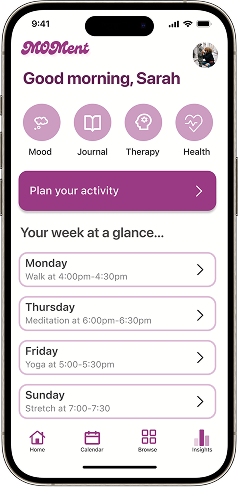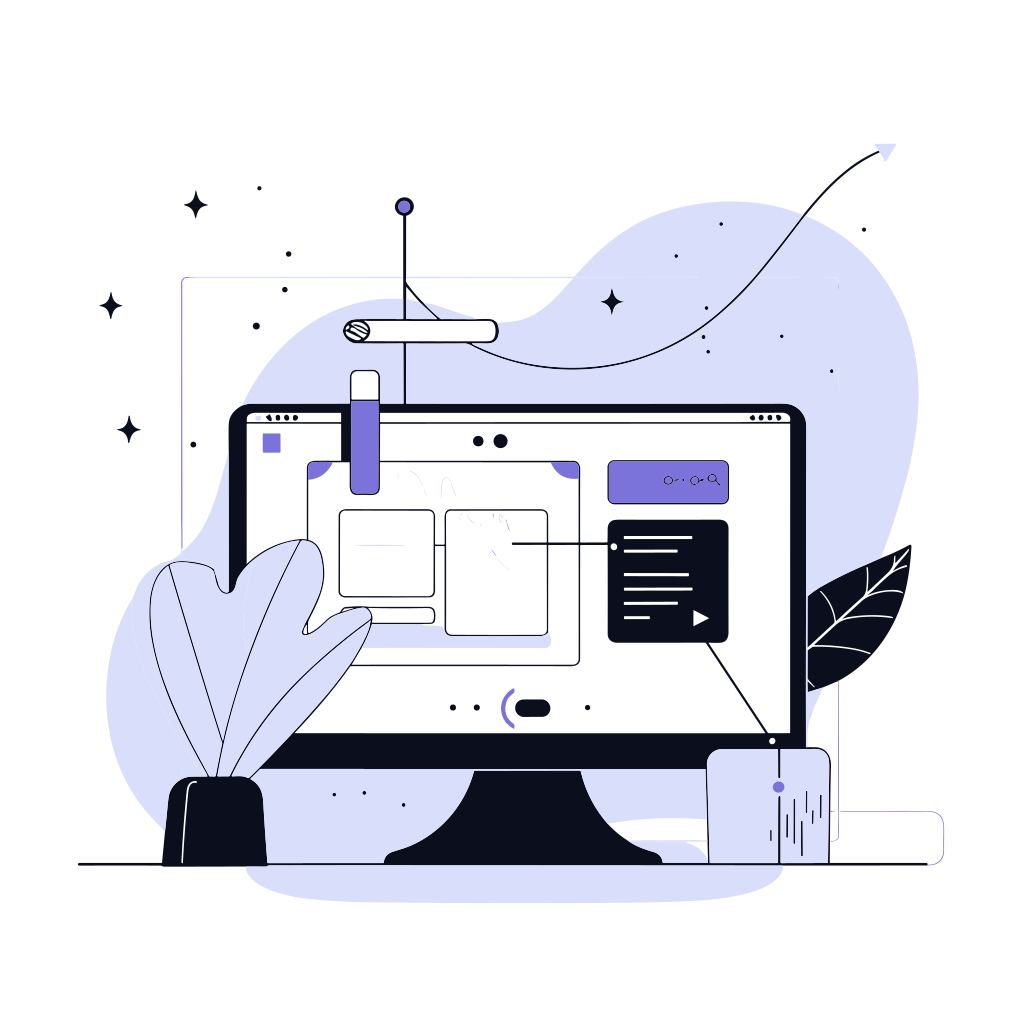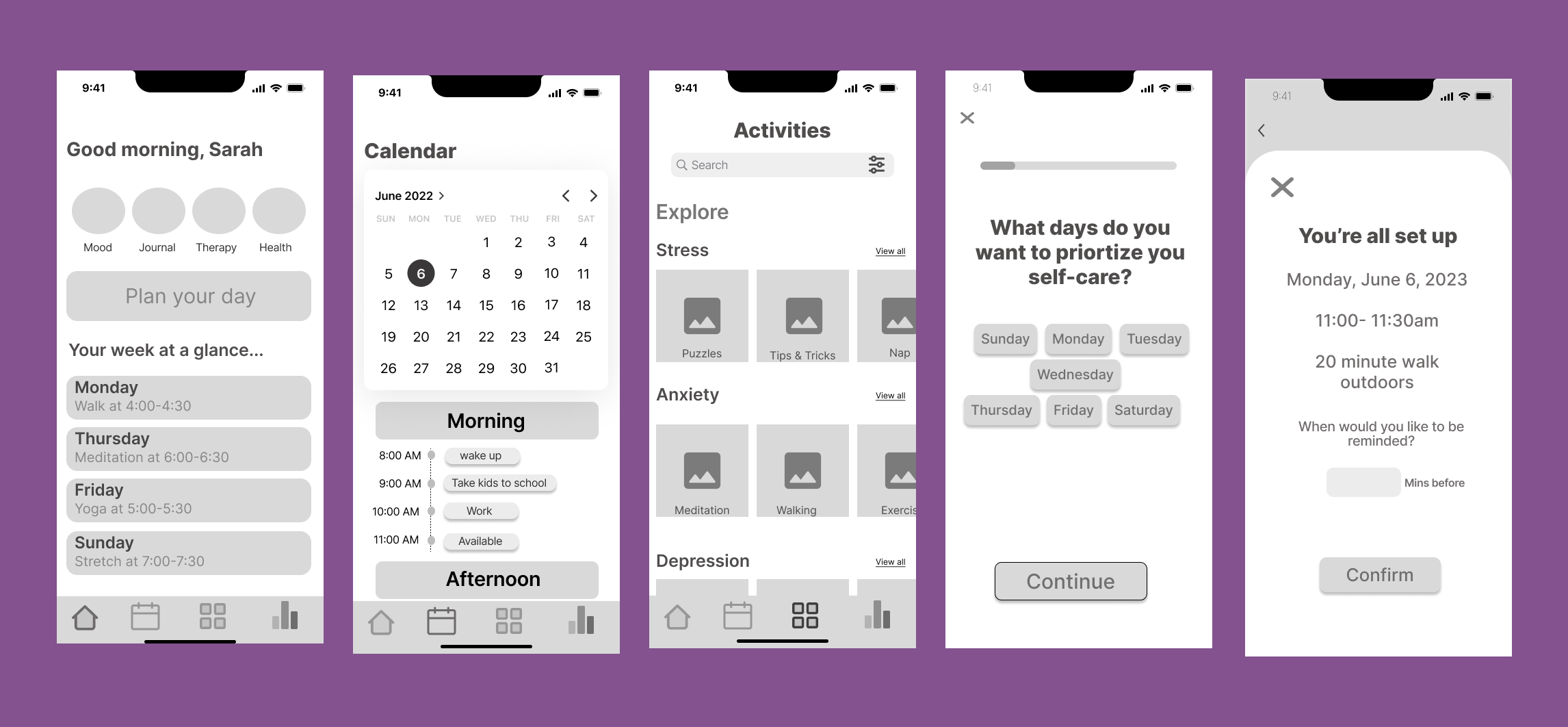Case Study
Mom-ent
Caring for single mothers when there is no one to care for them…


Overview
Tailored to address the needs of busy single mothers struggling to make time for their self-care, this solution acknowledges the challenge of balancing parental responsibilities and professional commitments. The tendency to sacrifice personal well-being due to these demands is prevalent. As a response to this scenario, an easy-to-use solution has been designed to ensure the self-care of single mothers is a priority.
Project
Academic | App for ios
Timeline
10 weeks | June – August 2023
My Role
End-to-end UX Designer
Tools
Figma, Slack, Canva, Trello, Otter.Ai, Google Suite
Design Thinking Methodology
My Approach
I chose to use the human-centered design methodology because it ensures that every decision is driven by real user needs rather than assumptions. By following a structured process—empathizing, defining, ideating, prototyping, and testing—we could create a solution that was both intuitive and impactful.
Key reasons for this approach:
- User-first mindset: The MOM-ent platform needed to be deeply personalized and stress-free, making it essential to start with research and empathy.
- Iterative problem-solving: By rapidly testing and refining, we could validate assumptions and avoid unnecessary complexity.
- Balancing usability with business goals: We needed a design that not only worked for users but also increased engagement and event bookings.
This method helped us align the product with how moms actually plan and experience events, ultimately leading to a solution that feels natural, reduces cognitive load, and enhances usability.


The Problem Space
Single mothers often are unaware of their lack of self-care which leads to an increased percentage of developing mental health issues. Single mothers with work, life, and family imbalances often lead to emotional and mental health issues such as depression, anxiety disorders, and PTSD. Approximately 30% of single mothers reported symptoms of depression or anxiety compared with just 14% of partnered mothers.
Secondary Research
Based on my secondary research single mothters tend to feel overwhelmed with all of their responsibilities with 30% reporting symptoms of depression and anxiety. My goal is to find more insightful experiences
from single mothers on how they cope and what factors affect their stress. I will use my primary research to identify how mothers cope with their anxiety and stress and what factors affect them the most.
200 Million
Children are under the care of single mothers
77.6%
was the rate of work in single mothers

Primary Research
I conducted Interviews to provide personal insights on their experiences, emotions and coping mechanisms while also uncovering or discovering new factors that may contribute to the stress of single mothers.
I created a careful and thoughtful interview guide in order to collect qualitative data to ensure that I was prepared to ask relevant questions. My goal was to gather experiences from single mothers about their struggles and challenges in managing work, family, and personal responsibilities.
What was I hoping to gain? I hoped to discover the common pain points, motivations, and behaviors among my participants.
Affinity Mapping
After conducting interviews, I went back through all of the transcripts and separated each interviewee by a certain color and each column represents the pain points, motivators and behaviors. Next, I categorized by common themes.
Themes and Insights
While completing the affinity map I noticed reoccurring themes between the participants. I began organizing common points brought up by the participants into the corresponding themes. I organized each point using the labels P for pain point, M for motivations and B for behaviors while keeping all the colors to their related participant.
Chosen Theme
Theme: Always the caregiver and never getting cared for.
Insight: Often mothers prioritize their kids and job before thinking of themselves leaving no time for self care.
How might we help single mothers stay accountable to a personalized self- care experience, in order to reduce anxiety and have a better overall mental well-being?
Persona
Personas provide a human-centered framework for understanding and addressing the needs of users, leading to more effective and successful design and marketing efforts. My persona was derived from the key data I extracted from the interviews during the empathize phase.
Meet Sarah Perez, She is a hardworking and dedicated single mom who has been raising her 2 kids on her own. Sarah’s days are filled with juggling her demanding job responsibilities and attending to her kids’ needs, leaving little time for herself. Just like all my interviewees, she is affected by the lack of self-care which leads to mental health issues such as anxiety, depression, and stress.
User Stories
Epics represent higher-level themes or goals. The relationship between epics and user stories is very important because epics provide an overview and context for the user stories within them.
These epics were chosen due to having a
common theme among the user stories that were based on the persona Sarah. Epics are a necessary step for creating a task flow.
Task Flow
With the chosen user stories and epic I am able to create a task flow.

Ideate
Sketching
Now that we have a task flow, my first step was to create a UI inspiration board. I started by dividing my inspirations into sections based on screen locations, CTA’s and etc. When collecting inspiration I took screenshots of some screen concepts that would be used to inspire my sketches.
I started by sketching ideas of layouts I would like to try. I wanted to have multiple variations of my screens to choose from, so I did 3 per screen. This gave me the opportunity to sketch without an idea in mind or be married to just one layout. I enjoyed the sketching process because it was a fun way to put pen to paper and add as many ideas down without the worry of making them perfect.
it’s crucial to have a clear understanding of the users’ needs, preferences, and goals. I considered factors such as usability, aesthetics, functionality, and alignment with the project’s goals. After thorough evaluation and analysis I was able to confidently move forward with my design decisions.

Wireframing
From my task flow I was able to develop a wire-frame. The idea behind my wireframes was to keep the chosen user-stories at the forefront of my design, such as setting reminders for self-care in order to be held accountable. I designed a bare minimum of the users needs to be able to test with and receive valuable feedback from my users.

Prototype
The MOMent is here
With the results of my user testing I had the information I needed to make proper iterations and go into high fidelity wire-frames. In this phase of the project I struggled to find the brand identity of this app that felt welcoming and empowering to single-mothers.
The Presentation
To top it off, I presented all my findings at a demo day hosted by BrainStation and for my professors. I had to condense all my findings and reasonings into a 5 minute presentation that could encompass all the work and research it took to design MOMent
Take a look at my loom video!
What I learned
During this project I learned the value of conducting thorough interviews and user testing. Without the findings of my primary research and user testing I would not have the insights necessary to make this a successful product in my target demographic.
I also learned how important time management is. The work done to improve the design of the prototype is crucial to the development of a functional and efficient app. Each phase was dependent on the one prior, so making sure to complete each phase with efficiency and making sure to be purposeful with each question or design was very important.
Thank you for you interest in my work!
Powered by coladas and pastelitos © 2024 Brianna Pages





